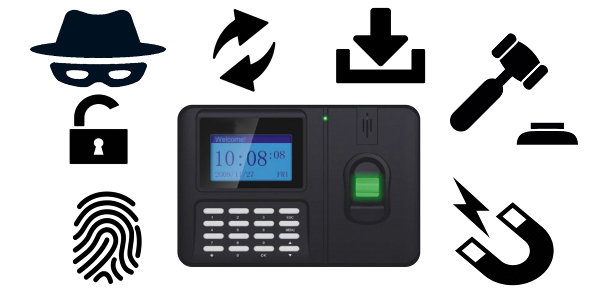There are several types of biometric devices using different identification types of a person. It includes facial recognition, voice recognition, retina scan, hand geometry, vein and fingerprint recognition. Of these fingerprint recognition is the most common. It has been around for quite some time now. There are certain sides of fingerprint recognition devices that many of us do not know. They are listed as below:

1) Legal implications
Before a company can start using biometric devices for attendance and access control, it has to abide by certain legal implications
a) An organization needs to put forward a policy for privacy and storage and usage of personal information(fingerprint). The key elements of the policy includes:
-
Clear and easily accessible statements of its policies and practices
-
The type of personal information being collected
-
Why the personal information is being collected and how it will be used
-
Disclosure of the data
-
Security practices and policies
b) The organization should do the following before collecting personally identifiable data like fingerprint
-
Make the person aware that the data will be collected
-
The reason why the information is collected
-
Who will receive the information
-
The organization (name and address) that is collecting as well as that which is retaining the information.
c) The organization also has to provide the person an option not to give the information or to withdraw the consent for the information to be stored at any time.
2) Different device store the fingerprints differently
For security purposes the fingerprints are not stored in the device as images. Instead it is turned into a mathematical representation of important points in the fingerprint like the addition of a new ridge, widest point of a ridge, etc. This representation varies from device to device. It is not possible to reverse engineer the mathematical representation into a fingerprint.
3) Fingerprints vary over time
With age the fingerprint can vary or change. It can also be difficult to read the fingerprint in case of a cut on the finger. Hence fingerprint may not be always accurate identification system especially over time.
4) Biometric devices can be hacked
Yes, like the password protection system, biometric system can be hacked very easily resulting in the reaching of important information like fingerprint into the wrong hands. The hacked data can be used for wrongful purposes. In 2017, the biometric data collected for the UIDAI(Unique Identification Authority of India) was hacked and the security breach caused a lot of damage.
5) Fingerprints tends to change more rapidly for blue collared workers
Blue collared job required various tools and machines to be handled by the worker for extended periods of time. This often causes the skin to split or become puffy. This results in matching fingerprints difficult as the fingerprint changes considerably from when they were collected over time.
6) Magnets can damage the biometric devices
Magnet can cause the device not to work properly. Electronic devices can get damaged when brought into a magnetic field.
7) Biometric data needs to be updated over time.
As biometric data like fingerprint can change over time, the biometric device needs to be updated regularly.
